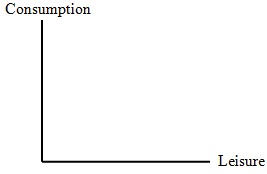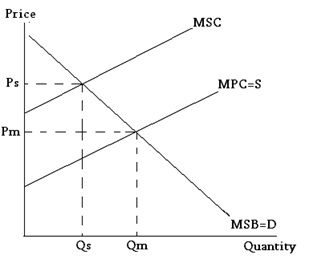Question 1. Winners of lotteries are a good example to study
a. the substitution effect.
b. the income effect.
c. how the income effect dominates the substitution effect.
d. how the substitution effect dominates the income effect.
Question 2. Dick owns a dog whose barking annoys Dick’s neighbor Jane. Suppose that the benefit of owning the dog is worth $700 to Dick and that Jane bears a cost of $500 from barking. Assuming Dick has the legal right to keep the dog, a possible private solution to this problem is that
a. there is no private solution that would improve this situation.
b. Jane pays Dick $650 to get rid of the dog.
c. Jane pays Dick $800 to get rid of the dog.
d. Dick pays Jane $600 for her inconvenience.
Question 3. Diane knows that she will ultimately face retirement. Assume that Diane will experience two periods in her life, one in which she works and earns income, and one in which she is retired and earns no income. Diane can earn $250,000 during her working period and nothing in her retirement period. She must both save and consume in her work period with an interest rate of 10 percent on savings.
a. Assume that Diane decides to consume $150,000 in the work period. How much will she consume in her retirement period?
b. If the interest rate on savings increases, will Diane increase or decrease her consumption in the work period? why? If possible, give a graph to demonstrate your conclusion.
c. Suppose now the government imposes an interest tax on the income, answer the same questions as in (b)?
Question 4. George Stigler, 1982 Nobel Laureate in Economics, once wrote that, according to consumer theory,” if consumers do not buy less of a commodity when their incomes rise, they will surely buy less when the price of the commodity rises.” Explain this statement.
Question 5. (This problem is challenging) The welfare system provides income to some needy families. Typically, the maximum payment goes to families that earn no income; then, as families begin to earn income, the welfare payment declines gradually and eventually disappears. Let’s consider the possible effects of this program on a family’s labor supply.
a. Draw a budget constraint on the graph below using the following information: suppose the wage rate is $2/hour and that each individual has 24 hours that they can either work or engage in leisure.

b. Suppose the government subsides the individuals according the following formula: Subsidy=12-Income/2, on the same diagram, draw a budget constraint that reflects the existence of the welfare system..
c. Suppose the individual before the imposition of the welfare system maximizes his utility by working 8 hours a day, draw an indifference curve representing this utility maximizing point, label this point A.
d. Adding indifference curves to your diagram, show how the welfare system could reduce the number of hours worked by the family. Explain, with reference to both the income and substitution effects.
e. Using your diagram from part (d), show the effect of the welfare system on the well-being of the family.
Question 6. Suppose the marginal social cost, marginal private cost and marginal social benefit are given in the following graph, Pm and Qm are the market equilibrium price and quantity; Ps and Qs are the social equilibrium price and quantity. Suppose the marginal social cost is greater than marginal private cost by E at any quantity.

To solve the problem of the negative externality, the government decides to levy a tax E on the private sector. On the graph, draw the social total surplus before and after the government levies the tax, and explain why the tax improves the well-being of the whole society.